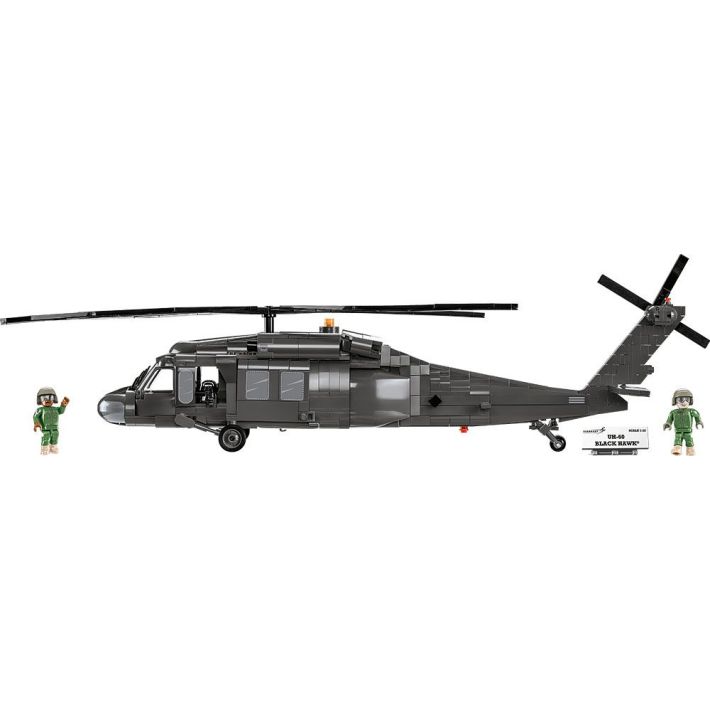UH 60 Black Hawk Performance: Speed, Array, and Maneuverability
UH 60 Black Hawk Performance: Speed, Array, and Maneuverability
Blog Article
Understanding the Role and Significance of Different UH60 Parts in Aeronautics Procedures
In the detailed globe of aviation procedures, every part of a UH60 helicopter plays a crucial duty in guaranteeing efficient and safe trips. From the blades system to the touchdown equipment, each component has a particular feature that adds to the total efficiency of the aircraft. Comprehending the details of these parts is not just important for the upkeep workers but also for the pilots who rely upon the smooth procedure of every component for an effective goal. As we explore the significance of the rotor system, engines, avionics, transmission system, and landing gear in UH60 operations, a deeper recognition for the harmony of these elements arises, dropping light on the intricacies that underpin the air travel industry's dedication to accuracy and reliability.
Rotor System
The rotor system, a vital component in helicopter design, plays an essential duty in supplying lift and directional control throughout flight. Containing the primary blades and tail rotor, this system is in charge of generating the essential wind resistant forces to keep the helicopter maneuverable and airborne. The main blades, normally situated over the helicopter, is the primary source of lift. As the rotor blades revolve, they produce a stress distinction in between the lower and leading surface areas, allowing the helicopter to conquer gravity and ascend into the air.
Moreover, the primary rotor additionally enables the helicopter to relocate different instructions by tilting the rotor disc. By modifying the angle of the rotor blades collectively, pilots can regulate the helicopter's forward, backwards, and laterally motions. In contrast, the tail blades, placed at the tail end of the helicopter, neutralizes the torque created by the main blades's rotation, making sure the helicopter remains balanced and can make controlled turns. Together, these blades elements form a sophisticated system that makes it possible for helicopters to do a wide variety of flight maneuvers effectively and safely.
:quality(70)/cloudfront-us-east-1.images.arcpublishing.com/archetype/V77OHDESHBCMVNC2PKNIKDQP4E.jpg)
Engines
In aviation operations, the proper performance of engines is extremely important to complementing the blades system's wind resistant abilities in helicopters. The UH60 helicopter is furnished with two General Electric T700-GE-701D engines, each offering 1,890 shaft horse power. These turboshaft engines are crucial parts that power the major rotor transmission, tail rotor system, and other important helicopter systems. The engines play a vital function in creating the needed power to raise the aircraft, control its trip, and guarantee a risk-free operation.
In situation of engine malfunctions or emergencies, pilots rely on their training and the helicopter's design functions to execute required procedures swiftly and safely. On the whole, the engines in original site UH60 helicopters are important components that add considerably to the aircraft's functional success and objective efficiency.
Avionics
In the UH60 helicopter, avionics incorporate a large variety of systems that guarantee effective and risk-free trip. Navigation systems, like GPS and inertial navigating units, offer precise placing information to the team, aiding in course planning and guaranteeing accurate navigating during flights.
Furthermore, avionics play an important function in improving situational awareness for pilots, permitting them to check important flight criteria, climate condition, and potential threats in real-time. By giving necessary data and automation abilities, avionics contribute substantially to the security, efficiency, and total performance of UH60 helicopters in varied air travel operations.
Transmission System
An essential element of the UH60 helicopter's functionality and efficiency is its transmission system. The transmission system in a UH60 helicopter is in charge of transferring power from the engines to the major blades and tail rotor systems. This important element makes sure that the helicopter can maneuver successfully and keep security during flight operations.
The transmission system in the UH60 helicopter includes numerous parts, including the primary gearbox, intermediate transmission, tail transmission, and drive shafts. Each of these components plays an essential role in guaranteeing that power is dispersed properly throughout the airplane.
The major transmission is particularly crucial as it transfers power from the engines to the primary rotor system, permitting the helicopter to raise off the ground and achieve forward, backwards, and side activity. The tail gearbox, on the various other hand, transfers power to the tail rotor, which assists counteract the major rotor's torque and offers directional control.
Touchdown Gear


The touchdown gear of the UH60 helicopter serves as an important element for ensuring steady and secure ground procedures, matching the performance site link of its transmission system. Being composed of wheels, shock absorbers, and assistance structures, the touchdown equipment sustains the helicopter's weight throughout departure, landing, and while on the ground. Routine assessments, lubrication, and substitute of worn-out parts are essential to maintain the reliability and performance of the landing equipment system.
Conclusion
To conclude, the various parts of the UH60 helicopter play important functions in guaranteeing the smooth operation of aviation tasks. uh 60. The rotor system, engines, avionics, transmission system, and touchdown equipment all work with each other to make sure the safety and try here performance of the aircraft. Recognizing the importance of each part is necessary for pilots, designers, and upkeep crew to make sure the total functionality of the UH60 helicopter during flight operations

Report this page